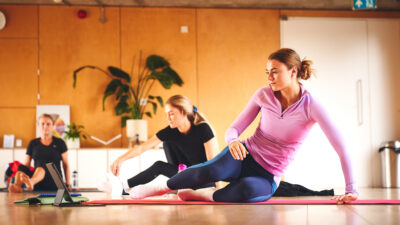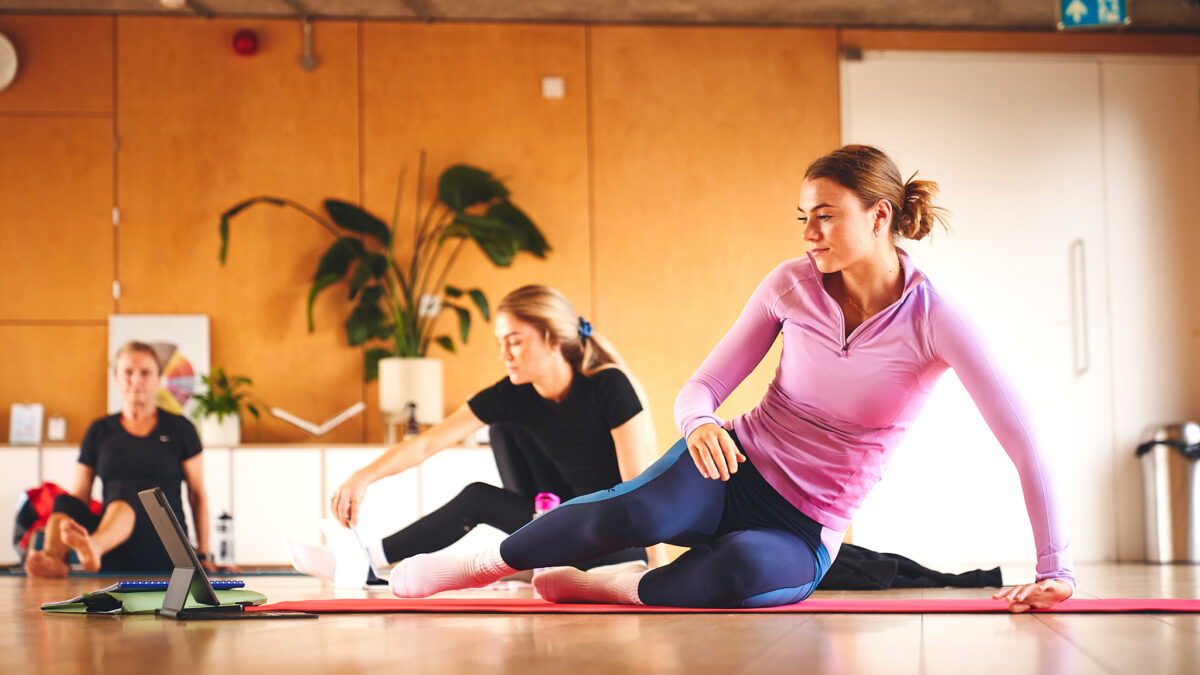



The connection between body and mind is becoming far more evident in studies. If we understand how they interact, it can provide exercise practitioners with a broader set of options to help more people, move more freely and with less pain.
Skills and techniques that improve physical health with mental practices can hold real power. It might even be the simplest way to improve physical health, particularly for those who are fearful of movement or experience persistent pain. A ‘no sweat workout’ like iMoveFreely is a great example of this kind of movement programme, because of they way it taps into the mind. The muscle energy techniques require the mind to muscle conscious connection, the nerve mobilisations specifically ‘calm the system down’, including the brain/CNS, and those ‘pure’ small joint mobilisations really hone in on body awareness and proprioception offers the brain a focus.
What we know from brain (and pain) science is how the brain produces physiological changes alongside the psychological ones. Imagine that when you are watching a horror movie how you might flinch or jump at the scary or gory parts, in the same way that during a funny movie you may ‘roll around’ laughing uncontrollably. Then imagine when you see someone you love, your cheeks heat up as you blush and maybe feel butterflies in your stomach. These are changes in our body that demonstrate how what we think can influence our physiology and movement. Try this: close your eyes and think about biting into a fresh, juicy lemon segment… go on… sink your teeth deep into the flesh, noticing the lemon juice dripping down your chin, inhale the citrus smell… did you notice more saliva in your mouth after doing this?
So, it may be that if we move differently, we can alter our mood or emotions too!? If we deliberately move in a certain way could it change the way we think? For example, try walking with big strides, chest open, chin up and smiling and notice how this makes you feel… what might you feel? Confident? Maybe you have caused a stranger to smile if you caught their eye as you smiled at them? How would this make you or them feel? The ‘ripple’ effect being around people who exude certain feelings/emotions, ways of moving or both, can really impact upon others.
As exercise practitioners we do this all the time, maybe without even thinking about it, or maybe with more focus on one aspect, i.e. movement. Yet if we consider the power of this physical and mental connection we may be able to have an even greater impact or influence on even more people.
By communicating in a variety of ways about either movement, or ways of thinking, we can connect with different personality types, helping them to feel more confidence in their physical ability and therefore helping their self-esteem. This can reduces stress and anxiety, and even improve sleep.
The techniques of iMoveFreely combines both mind and body using rehabilitation protocols as prehabilitation which enhances both.
These low grade movement preparation techniques allow ALL abilities to feel empowered in their motion and their emotions. It can expand their understanding of what movement is when using mindful ways of applying these mind to muscle, nerve and bone connections.
We know movement is a great way to enhance our wellbeing. In fact, did you now that just a 10 minute brisk walk can boost mood, increase mental alertness and our energy levels. People often like accountability so something as simple as a walking group, helps with the positive mental and physical boosts, from simply moving in fresh air with others. Maybe adding some iMoveFreely on the park bench, against the tree and in pairs could also be added to prepare them for progressing into something more challenging, if they so choose.
As they progress, maybe even becoming members of your studio or gym, the iMoveFreely programme can be taken to the next level with body weight training or using bands or light weights further developing movement confidence and therefore mental confidence of what is possible.
Using breathing techniques during the muscle energy techniques is a no brainer! Why not try some METS with berth work with me this Blue Monday…
References
(No date) (PDF) Pathways linking physical and mental health: The role of Brain Structure and Environment. Available at: https://www.researchgate.net/publication/377459155_Pathways_linking_physical_and_mental_health_The_role_of_brain_structure_and_environment (Accessed: 14 December 2024).
A;, V.M.B. (no date) Editorial: Moving the mind, thinking the body: New insights on the mind-body connection from the neuroscience of movement, sports, arts, yoga, and meditation, Frontiers in human neuroscience. Available at: https://pubmed.ncbi.nlm.nih.gov/38384331/ (Accessed: 14 December 2024).
BUTLER, D.S. (1989) ‘Adverse mechanical tension in the nervous system: A model for assessment and treatment’, Australian Journal of Physiotherapy, 35(4), pp. 227–238. doi:10.1016/s0004-9514(14)60511-0. Grant JA;Courtemanche J;Duerden EG;Duncan GH;Rainville P; (no date) Cortical thickness and pain sensitivity in Zen meditators, Emotion (Washington, D.C.). Available at: https://pubmed.ncbi.nlm.nih.gov/20141301/ (Accessed: 14 December 2024).
Greeson, J. and Eisenlohr-Moul, T. (2014) ‘Mindfulness-based stress reduction for chronic pain’, Mindfulness-Based Treatment Approaches, pp. 269–292. doi:10.1016/b978-0-12-416031-6.00012-8. Grossman, P. et al. (2004)
‘Mindfulness-based stress reduction and health benefits’, Journal of Psychosomatic Research, 57(1), pp. 35–43. doi:10.1016/s0022-3999(03)00573-7. McGonigal, K. (2021) The joy of movement: How exercise helps us find happiness, hope, connection, and courage. New York, NY: Avery, an imprint of Penguin Random House LLC. Office for Health Improvement and Disparities (OHID) (no date) Physical activity, Physical Activity – Data – OHID. Available at: https://fingertips.phe.org.uk/profile/physical-activity/data (Accessed: 23 April 2023). Raymond St. Marie, M.D. et al. (2018) Neurological evidence of a mind-body connection: Mindfulness and pain control, American Journal of Psychiatry Residents’ Journal. Available at: https://psychiatryonline.org/doi/full/10.1176/appi.ajp-rj.2018.130401 (Accessed: 14 December 2024). Ribot-Ciscar, E. et al. (1991) ‘Post-contraction changes in human muscle spindle resting discharge and stretch sensitivity’, Experimental Brain Research, 86(3). doi:10.1007/bf00230541.Rosenzweig S;Greeson JM;Reibel DK;Green JS;Jasser SA;Beasley D; (no date) Mindfulness-based stress reduction for chronic pain conditions: Variation in treatment outcomes and role of Home Meditation Practice, Journal of psychosomatic research. Available at: https://pubmed.ncbi.nlm.nih.gov/20004298/ (Accessed: 14 December 2024). Shapiro, S.L. et al. (2005) ‘Mechanisms of mindfulness’, Journal of Clinical Psychology, 62(3), pp. 373–386. doi:10.1002/jclp.20237. Singh, B. et al. (2023) Effectiveness of physical activity interventions for improving depression, anxiety and distress: An overview of systematic reviews, British Journal of Sports Medicine. Available at: https://bjsm.bmj.com/content/early/2023/03/02/bjsports-2022-106195 (Accessed: 23 April 2023). Wong, S.Y.-S. et al. (2011) ‘Comparing the effectiveness of mindfulness-based stress reduction and multidisciplinary intervention programs for chronic pain’, The Clinical Journal of Pain, 27(8), pp. 724–734. doi:10.1097/ajp.0b013e3182183c6e.